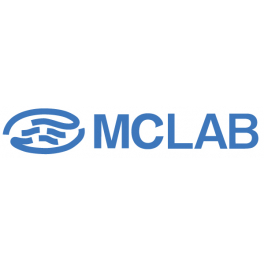 View full size
View full size
- Analiza kwasów nukleinowych
- Analiza białek
- Odczynniki biochemiczne
- Enzymy
- Edytowanie genów
- Klonowanie
- Diagnostyka kliniczna
- Human Identification STR kits
- Sprzęt laboratoryjny
- Oprogramowanie
- A&A Biotechnology
- AdvancedSeq
- BioDynami
- Plant Cell Technology
Aktualności
-
XXXV. Izakovičov memoriál 2025
We are pleased to announce our participation in the prestigious XXXV. Izakovič Memorial 2025, which will take place on October 8–10, 2025 at the Grandhotel Praha, Tatranská Lomnica. The Izakovič Memo...
Czytaj więcej -
1st Czechoslovak Congress of Medical Genetics 2025
In the spring, we will participate in the 1st Czechoslovak Congress of Medical Genetics, which will take place from April 2–4, 2025, at the Cultural and Congress Center Elektra in the spa town of Luha...
Czytaj więcej -
RANK 2025
Visit us at the 19th edition of the RANK 2025 conference, which will take place on March 19th and 20th at the Zlatá Štika Hotel in Pardubice. The conference is organized by the Czech Society of Clinic...
Czytaj więcej
 View full size
View full size
Description
FastSep(TM) high performance resins and chromatography cartridges
Load any metal ions of your choice
High affinity & high capacity
Minimal non-specific binding & excellent purity
Long spacer arms & minimal steric hindrance
Low metal ion leaching & excellent stability
Maintain high performance after multiple repeated use
How to choose different ligands in IMAC?
NTA and IDA are the two most widely used ligands in IMAC. NTA is a tetravalent ligand with coordination number 4 and therefore stronger coordination of metal ions, while IDA is a trivalent ligand with coordination number 3. Generally, NTA gives higher binding specificity and lower metal ion leaching, while IDA shows more non-specific binding and increased metal ion leaching. IDA can have higher metal ion loading density and usually requires much lower imidazole concentration in eluent.
As many factors can affect the choice of optimal ligand-metal ion combination, the best approach is to try different combinations and let your proteins decide. FastSep(TM) high performance resins and cartridges offer numerous ligand-metal ion combinations to meet various purification needs. FastSep(TM) high performance resins and chromatography cartridges are based on highly cross-linked agarose 6% beads which have structural characteristics that result in superb physical strength, excellent flow properties, low backpressure, and an open pore structure. FastSep(TM) high performance resins and chromatography cartridges allow operation at very high flow rates, resulting in increased throughput and rapid column cleaning between chromatography runs.
|
Name |
Cat# |
Description |
|
NTA Cartridge |
NTA-CC1X5 |
5 x 1ml metal-ion free NTA chromatography cartridge |
|
NTA Cartridge |
NTA-CC5 |
1 x 5ml metal-ion free NTA chromatography cartridge |
|
NTA Cartridge |
NTA-CC5X5 |
5 x 5ml metal-ion free NTA chromatography cartridge |
|
IDA Cartridge |
IDA-CC1X5 |
5 x 1ml metal-ion free IDA chromatography cartridge |
|
IDA Cartridge |
IDA-CC5 |
1 x 5ml metal-ion free IDA chromatography cartridge |
|
IDA Cartridge |
IDA-CC5X5 |
5 x 5ml metal-ion free IDA chromatography cartridge |
Specifications
| Matrix | Highly cross-linked 6% beaded agarose |
| Active group | Metal-ion free Nitrilotriacetic Acid (NTA) or Iminodiacetic Acid (IDA) |
| Active group density | >40 umol/ml drained medium |
| Spacer | 17 atom stable and uncharged ether hydrophilic linkage |
| Bead geometry & size | Spherical 50 to 150 um |
| Bead mean diameter d50v | 90 um |
| Linear flow velocity | <75 cm/h at 25 degC, HR 16/10 column, 5 cm bed height |
| Recommended linear flow rate | <30 cm/h |
| Pressure/flow specification | Base matrix 100-200 cm/h, pressure drop cm H2O/bed height = 15, bed height 10 cm, 5 cm i.d. |
| 1ml Cartridge bed dimensions | 7×25 mm |
| 1ml Cartridge bed height | 25 mm |
| 1ml Cartridge bed volume | 1 ml |
| 1ml Cartridge column I.D | 7 mm |
| 5ml Cartridge bed dimensions | 16×25 mm |
| 5ml Cartridge bed height | 25 mm |
| 5ml Cartridge bed volume | 5 ml |
| 5ml Cartridge column I.D | 16 mm |
| Maximum cartridge flow rate | 5 ml/min (1 ml cartridge) or 20 ml/min (5ml cartridge) |
| Recommended cartridge flow rate | 1 ml/min (1 ml cartridge) or 5 ml/min (5 ml cartridge) |
| Maximum pressure during operation | 5 bar [0.5 MPa] (70 psi) |
| pH Stability working range | 3 to 13 |
| pH Stability cleaning in place (cip) | 2 to 14 |
| Chemical stability | Stable to commonly used aqueous solutions. Can be used with non-ionic detergents, denaturing solvents, e.g. 8 M urea and 6 M guanidine hydrochloride, Stable in organic solvents, e.g. 50% methylformamide and 50% dioxane. |
| Storage | 20% ethanol |
| Storage temperature | 2 to 8 degC |


